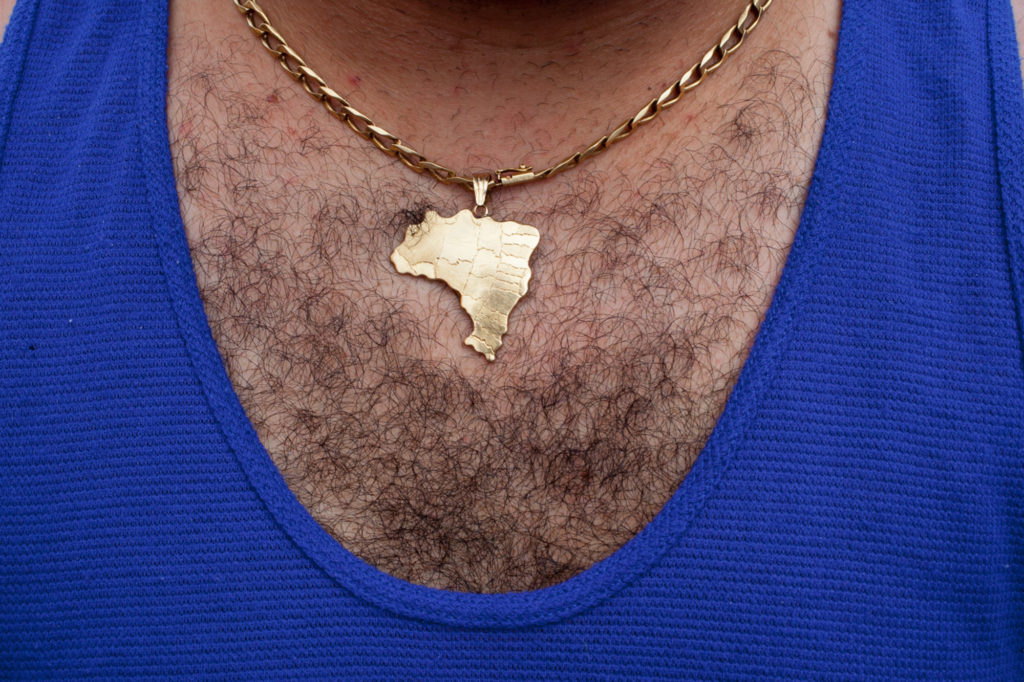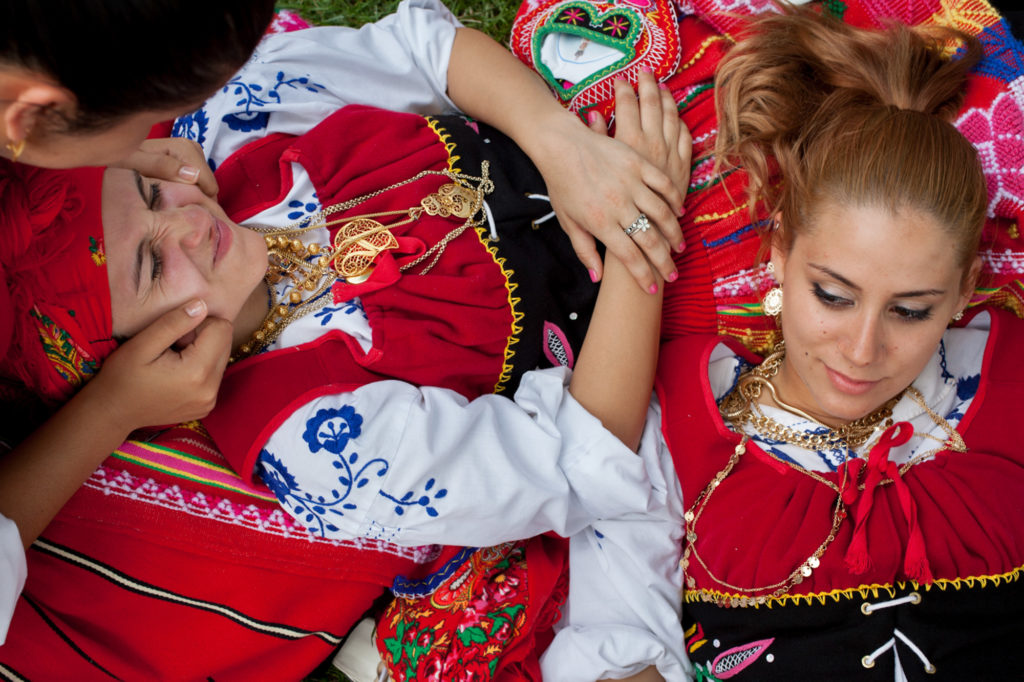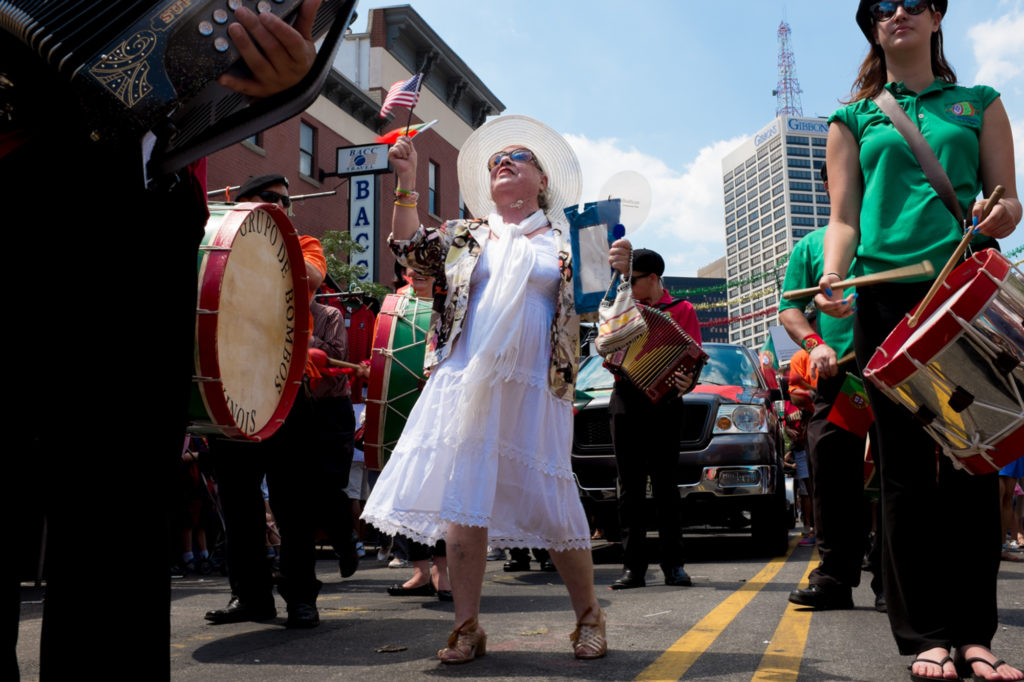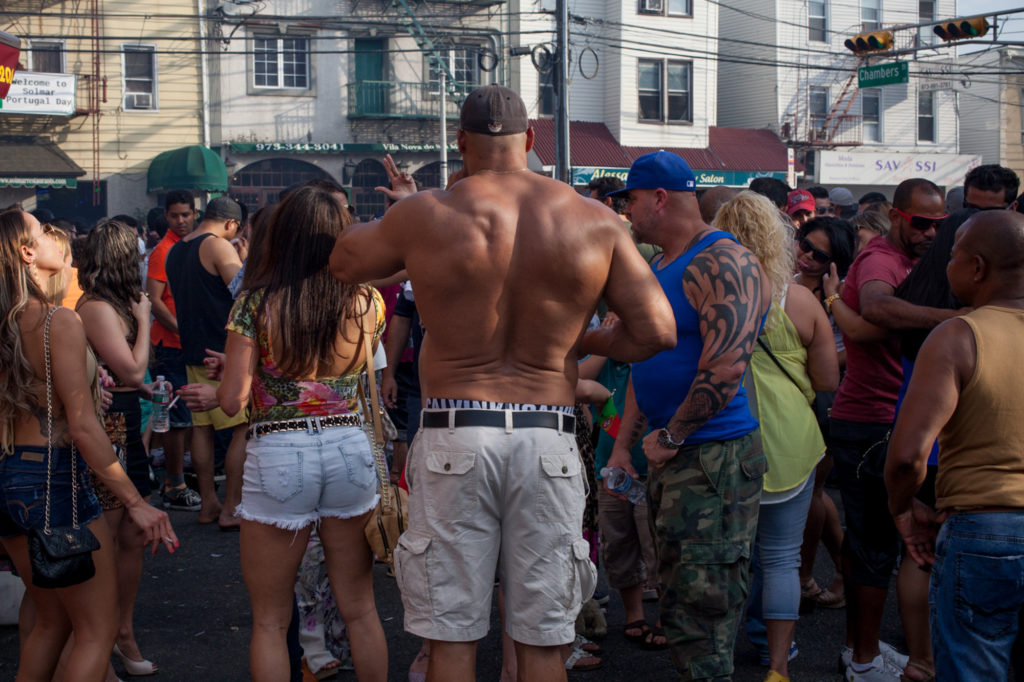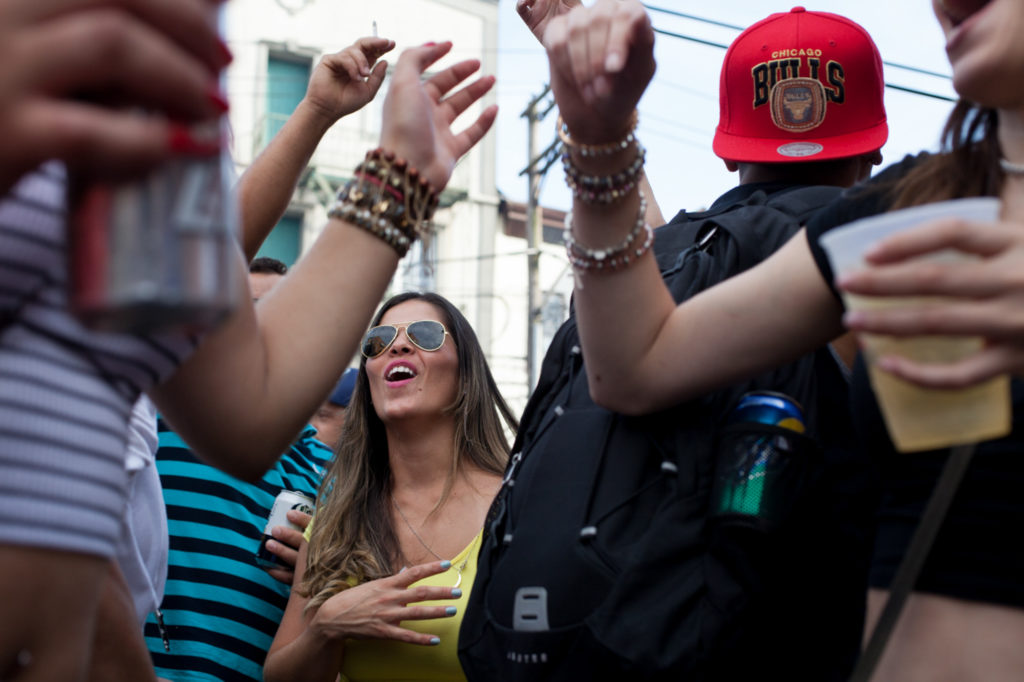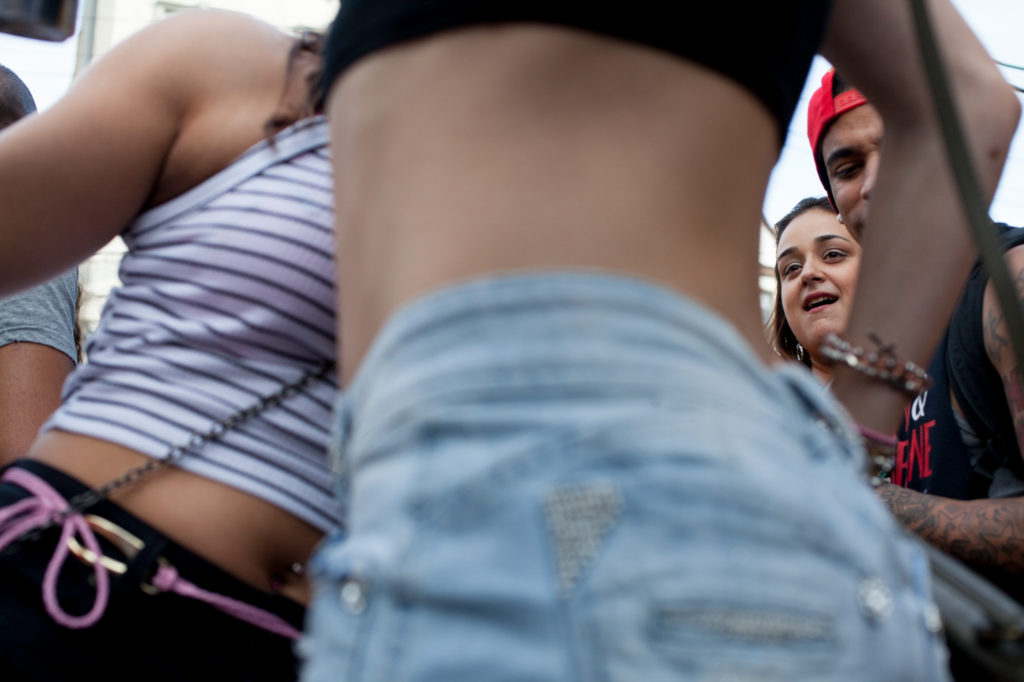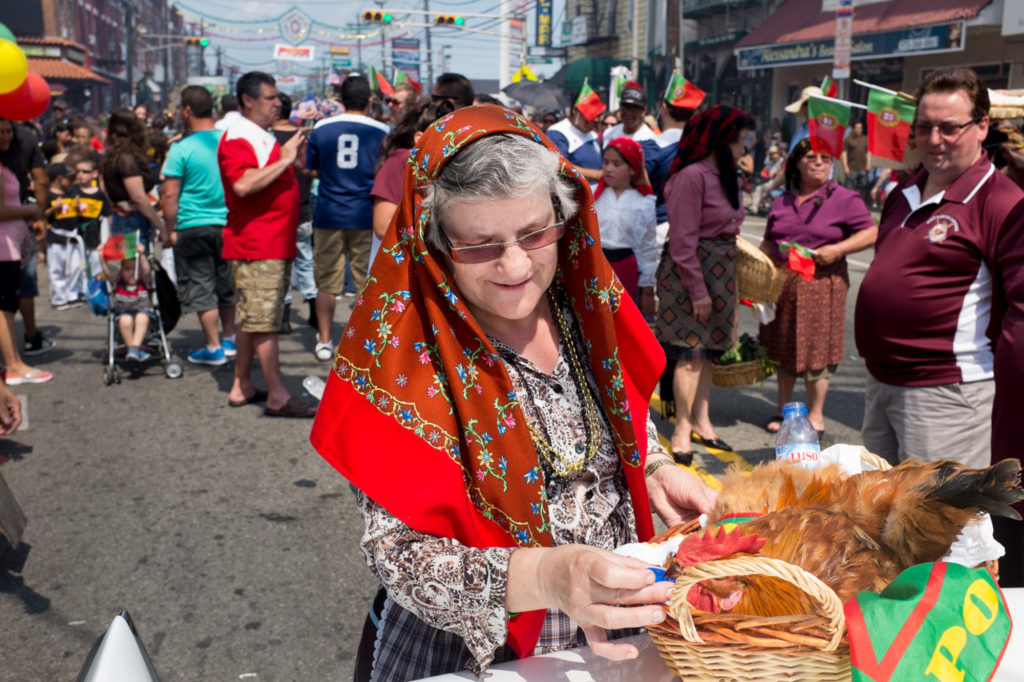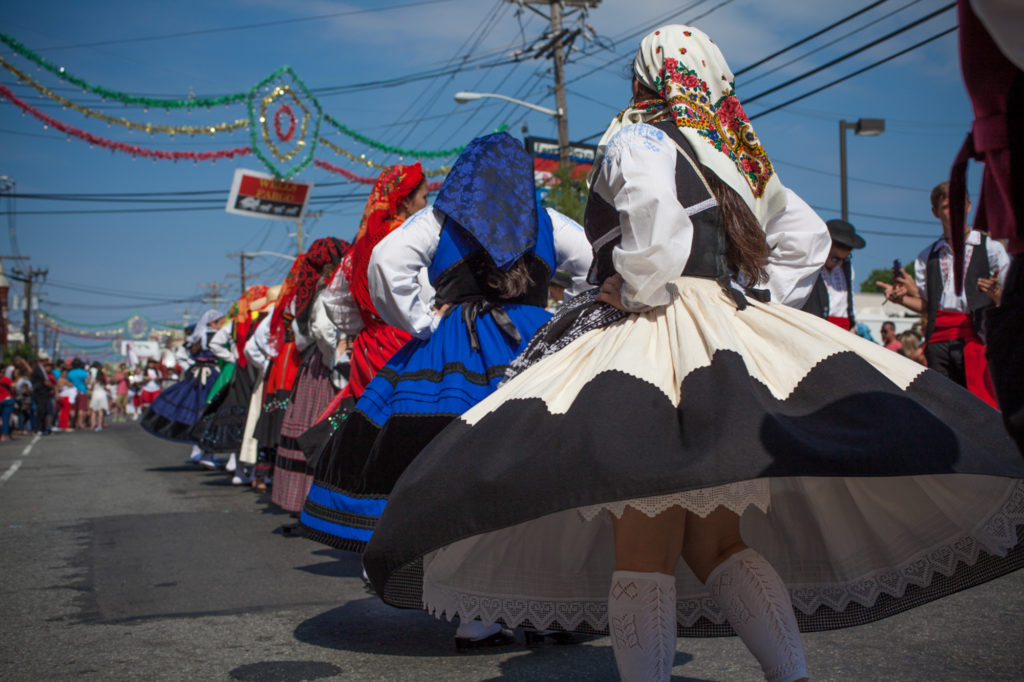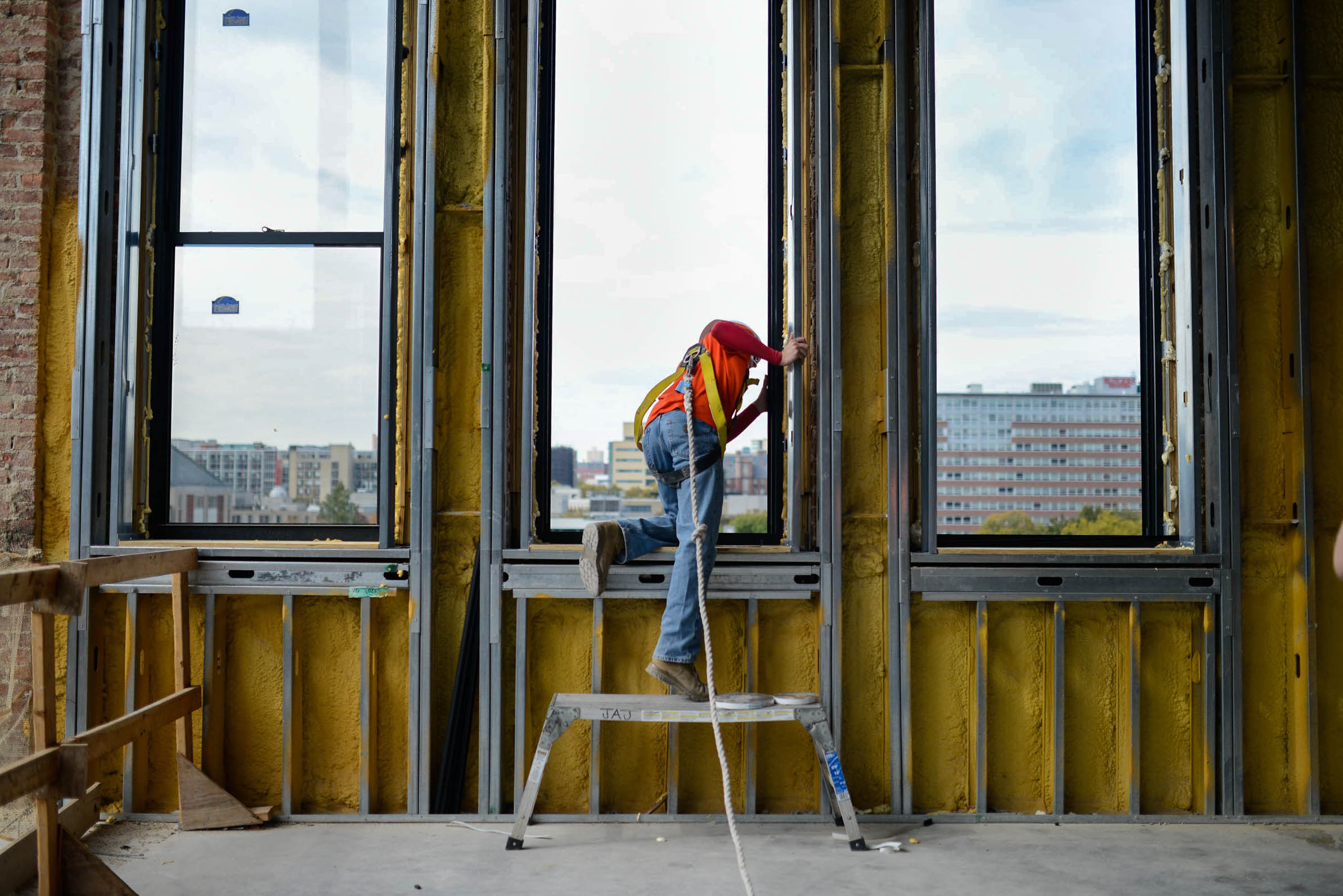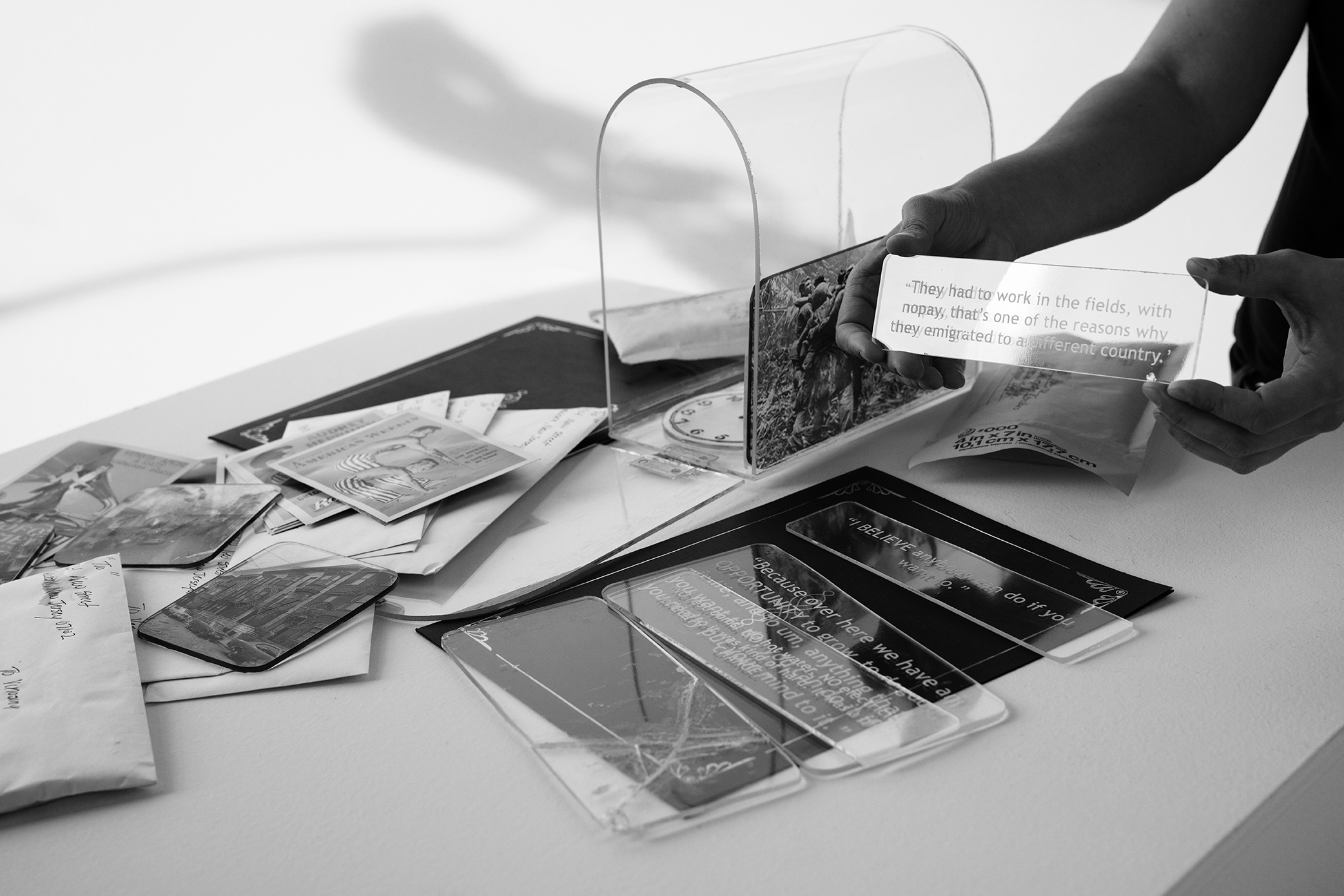Portuguese immigration to the Ironbound section of Newark started well over 100 years ago.
That long history is mapped out in the Ironbound’s institutions. For instance, Sport Clube Português, perhaps the most prominent Portuguese club in the area, was founded in 1921 in the heart of the Ironbound. Igreja Nossa Senhora de Fátima, the Roman Catholic church built by the Portuguese community in the Ironbound, opened in 1958. And Portugal Day, the weekend-long celebration held in the Ironbound every June, was first organized in 1979.
The Portugal Day celebration in Newark is the vehicle through which many outsiders first learned of the community of Portuguese immigrants in the area. While the weekend features numerous events held at various locations throughout the neighborhood, Ferry Street has long served as the main hub for the festival. With all traffic and cars cleared for the better length of a mile, the sidewalks are lined with tents and stands where vendors, restauranteurs and club representatives attract the attention of thousands. As anyone who has been will tell you, the weekend is not for the faint of heart. There are people everywhere you look, as far as you can see. Too many people. So many loud people.

We are here, we are someone.
And yet that’s why so many have kept coming back for the last 37 summers. Some might claim to come for a taste of home but no one shows up expecting a small crowd. The crowd is part of the appeal. For so many. To be among the people. All the people. Portugal Day weekend has never had difficulty attracting attendees. The public’s interest in the festival, and the interest of the organizers and participants who year after year noted with pride its growing size and attendance, helped to validate the importance of the Portuguese-American community in the region. Portugal is a small country of just 11 million people and most Portuguese immigrants who arrived in Newark came from small towns. When Portugal Day weekend started attracting as many as 300,000 people, the festival was a badge of honor for those immigrants: we are here, we are someone.
More recently, as Portuguese immigration into the area has dwindled and subsequent generations of Portuguese immigrants have been mainstreamed into the larger American culture, the festival has changed quite significantly in ways that are both too encompassing and too minute to accurately explain here. Suffice to say that presently the weekend has evolved into a more inclusive celebration of the Ironbound’s changing demographics. As history tells us, this chapter in the story of the Portuguese is similar to the immigration experiences of other groups. And it is a story that doesn’t end with the Portuguese; it will repeat itself again, with new immigrant communities. But for countless first- and second-generation children of Portuguese immigrants, the mere mention of Portugal Day weekend brings back memories that are synonymous with both childhood and family. Whether it is the memory of going to Iberia Restaurant for sardinhas or participating in the Sunday afternoon parade, for many who grew up in Portuguese-American households throughout the 80s and 90s, Portugal Day was an excuse to stay out late with friends, or the origin of a summer romance, the site of a first kiss. To the soundtrack of live Jorge Ferreira and Quim Barreiros songs, so many of us came of age in the celebration of a left-behind world that older generations desperately tried to recreate for us.
Change is a by-product of the neighborhood’s ongoing immigrant churn.
For these reasons, Portugal Day in the Ironbound is a symbol not only of the Portuguese immigrant community’s existence but also, in more private and intimate ways, a reflection, for so many, of the life stories of the Portuguese-Americans who participated summer after summer. In many ways, the evolution of Portugal Day has mirrored the diffusion of the Portuguese presence in the area. Compared with the Ironbound of those days, today’s Ironbound is less Portuguese. There are some who lament that fact. In their nostalgia they forget that change is a by-product of the neighborhood’s ongoing immigrant churn. We shouldn’t necessarily begrudge it. We should embrace the change, try to understand it. And in doing so, there is perhaps an opportunity — a space made sweeter by the distance of time — to relive the memories of so many childhood afternoons and evenings, in the early-summer heat of June, replaying year after year as if they’d always be here. And isn’t that the ultimate benefit of memory? That it can transport us back to a time, or a place, that remains with us only as that — a souvenir of somewhere we’ve been.
